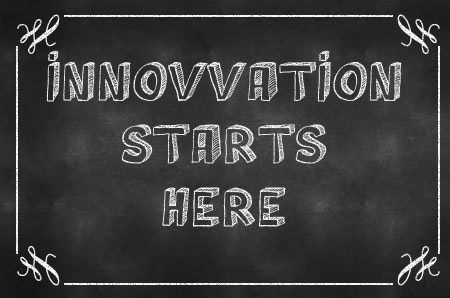A CEO Checklist

GUEST POST from Teresa Spangler
“Trends are only useful when we look at them through multiple lenses as we gaze across all six time zones. We must think of trends as signposts that can illuminate the conditions we will likely encounter at some point in the future, even if that future is a century away.” — Amy Webb
No one will argue the need today to focus on back-to basics! Challenging economies dictate this type of focus. In my years of experience, those companies that cut to deeply in futures planning struggle more trying to rebound when economies improve. So why is it so important to be a futurist in today’s economy? It’s a formidable way to help you and your organization navigate the world of extreme consequences with optimism. But let’s face it, maintaining good organizational morale and motivation can be challenging as worldly events may create fear and anxiety. That’s why I want to talk to you about an effective method called “signal crafting.”
So, what is signal crafting? This healthy exercise provides insights beyond your day-to-day and even your year-to-year planning. It involves diving deeply into futuristic scenarios by crafting the best-case and worst-case outcomes. Signal crafting exercises help you anticipate future scenarios of global events, giving life and a 360-degree view of circumstances. In turn, by building out these signaling exercises, you are equipping your organization to plan better and, in many cases, alleviate and turn that fear into fuel.
But what are the benefits of signaling in planning for the future? Let me tell you:
- Signal crafting is an exercise that helps businesses prepare for the future by creating scenarios based on different factors that affect their industry.
- Companies must focus on attuning to signals of change in the world, including industry trends and emerging technologies, changing consumer behavior, social and cultural shifts, political and regulatory changes, and economic conditions.
- By combining different factors that affect a business’s future, it can envision various potential outcomes and make strategic decisions based on the most likely scenarios.
- The exercise helps businesses identify risks and opportunities and develop strategic plans considering possible outcomes.
- The exercise fosters cross-departmental collaboration and gains multiple perspectives.
- The exercise can be repeated periodically, allowing companies to adapt to new signals of change and remain future-ready planners and strategists.
So, how do you start the signal crafting exercise? Here are some steps you can take:
Focus teams on attuning to signals of change in the world, including industry trends and emerging technologies, changing consumer behavior, social and cultural shifts, political and regulatory changes, and economic conditions. Here are a few team exercises you could use to gain future insights:
- Choose a signal of interest: Each team member chooses one signal.
- Go as deep as you can to envision how the world is affected by this signal of change.
- Envision the signal, including the details above; in the scenario, it’s ten years from today. What’s happening?
- Write a futuristic story about that signal. Write about two different outcomes ten years from now.
- Construct a positive outcome.
- Construct a worst-case outcome.
- Share your stories, both optimistic and worst-case scenarios. Talk about these and how each signal may impact your business, people, individuals, environments, governments, etc.
Company teams can create scenarios based on the categories they choose. The teams can then present their scenarios to other groups, fostering cross-departmental collaboration and gaining multiple perspectives. The exercise can be repeated periodically, allowing companies to adapt to new signals of change and remain future-ready planners and strategists.
By creating a range of scenarios that identify potential risks and opportunities, businesses can develop strategic plans that consider different possible outcomes. These actions enable the company to be better prepared for the future and proactively prepare for different outcomes instead of reacting to events as they unfold. The approach will ensure you maintain a competitive advantage, but moreover, you may experience a calming of fear and anxiety in the organization. So many benefits come from this one exercise, but overall it is a future-planning exercise to help the organization achieve long-term success.
These steps are helpful to you as you navigate the tough times ahead. As Amy Webb said, “Trends are only useful when we look at them through multiple lenses as we gaze across all six time zones. We must think of trends as signposts that can illuminate the conditions we will likely encounter at some point in the future, even if that future is a century away.”
Below is a more comprehensive checklist to Future-Visioning:
- Focus on signals of change. Pay attention to industry trends, emerging technologies, changing consumer behavior, social and cultural shifts, political and regulatory changes, and economic conditions.
- Identify potential risks and opportunities. Develop strategic plans that consider different possible outcomes. Remain, future-ready planners and strategists.
- Choose a signal of interest. Each team member chooses one signal of focus.
- Encourage team members to become experts in their chosen signal. Gain a deeper understanding of a specific trend or factor affecting the business.
- Envision future scenarios: Imagine the future based on different possible outcomes. Dive deep into how the world is affected by each signal of change.
- Build a 360-degree view of potential scenarios. Anticipate future events and prepare for them proactively. Alleviate fear and turn it into fuel for the organization.
- Write a futuristic story. Write a futuristic story about what could happen ten years from now. Construct a positive and worst-case outcome based on the chosen signal.
- Envision a range of potential outcomes. Identify potential risks and opportunities. Encourage cross-departmental collaboration and gain multiple perspectives.
- Share stories and outcomes
- .Discuss the stories and outcomes with other groups. Discuss how each signal may impact the business, individuals, environments, governments, etc.
- Foster collaboration and communication within the organization. Gain a better understanding of different perspectives. Develop strategic plans based on a range of possible outcomes.
- Repeat periodically. Conduct the exercise periodically to adapt to new signals of change and remain future-ready planners and strategists.
Develop a long-term strategic vision for the organization. Stay up-to-date on industry trends and emerging technologies. Remain adaptable and flexible to changing conditions by evolving these strategies on a periodic basis. Be ready when markets rebound!
Image credit: Unsplash
![]() Sign up here to join 17,000+ leaders getting Human-Centered Change & Innovation Weekly delivered to their inbox every week.
Sign up here to join 17,000+ leaders getting Human-Centered Change & Innovation Weekly delivered to their inbox every week.




